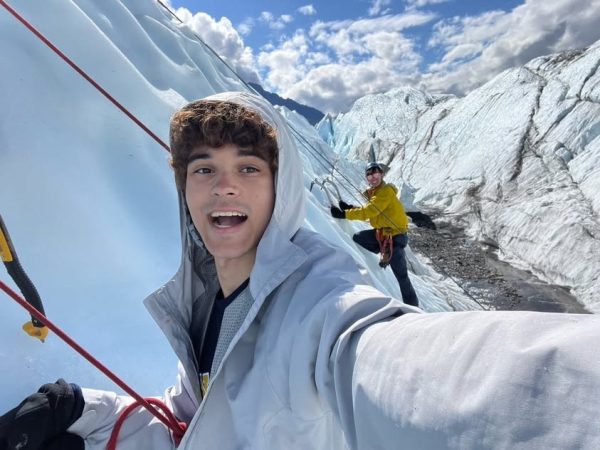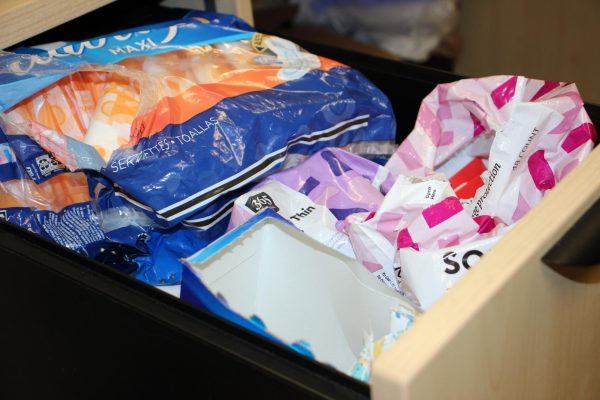When school and home merge
Mia Perez (11) sits in front of her personalized backdrop as she prepares to log into class. “Since I miss being in school physically, I wanted to bring some of it into my workspace at home,” Perez said.
A year ago, students worried about whether the morning traffic would make them tardy or if they would remember their locker combination. Now, with COVID-19 forcing Shelby County Schools to transition to completely virtual schooling, they worry about whether they are muted or if they will remember to lower their virtual hand.
Although online classes may eliminate some of the difficulties of pre-pandemic school, it presents students with new experiences and challenges and also lacks much of the excitement associated with in-person learning. Probably the most drastic difference between virtual and in-person is the ability to socialize with classmates.
“I miss seeing people… You’re not really talking to [friends] unless it’s an activity over [Teams], so it’s not the same sort of interaction that you would normally have in the classroom,” Jonas Kannady (11) said.
Of course, with thousands of students online every day, technological problems undoubtedly persist. Microsoft Teams occasionally prohibits some, like Waylon Smith (10), from joining class, or unexpectedly crashes during the day. For others, like Perez, the problems can be attributed to a poor WiFi connection since everyone in the house is also using it.
If students are lucky enough to avoid technological issues, some still experience distractions from their siblings, parents or outside factors.
“Most of [my siblings] are younger, so they can be very loud sometimes, and also sometimes they just come up to me and start talking during my classes,” Perez said.
In addition to social interaction and predictability, virtual learning also lacks the usual movement from period to period and keeps students stagnant throughout the day.
“It’s boring because I’m literally at home 24/7,” Ivy Qui (12) said. “It’s like actual quarantine now, as if the pandemic just started.”
While online school may not be the ideal situation, students are making the best of the extraordinary circumstances. With resilience, they continue to improvise, adapt and overcome.
“I still try to make myself a little routine so that I’m not just waking up at 7:50 and hopping on class,” Kannady said. “I can still try and get more of that ‘school feel’ rather than just being at home.”
Though much can be said about the advantages of normal, face-to-face learning, virtual learning also has its pros. No longer do students worry about losing worksheets or retrieving materials from lockers with new, strictly online assignments.
“I’m probably more organized here because there’s no movement,” Kannady said. “All of my stuff can sit on my nightstand, so there’s no, ‘Ok, I need to put all this stuff in my backpack for school the next day.’ Everything is either on my desk or right next to it.”
The unprecedented 2020-2021 virtual school year challenges students in many ways. However, students continue to acclimate to their new environment and approach every day with an optimistic outlook.
“The shift was pretty easy for me because I feel like it’s the same thing,” Smith said. “You just have to get used to it, and once you get used to it, it’ll be way easier.”
Your donation will support the student journalists of White Station High School. Your contribution will allow us to purchase equipment and cover our annual website hosting costs.






































